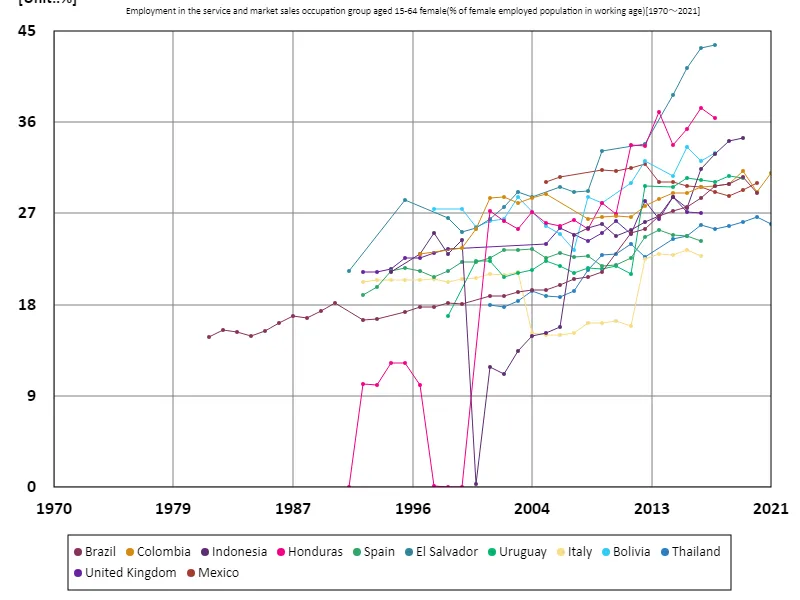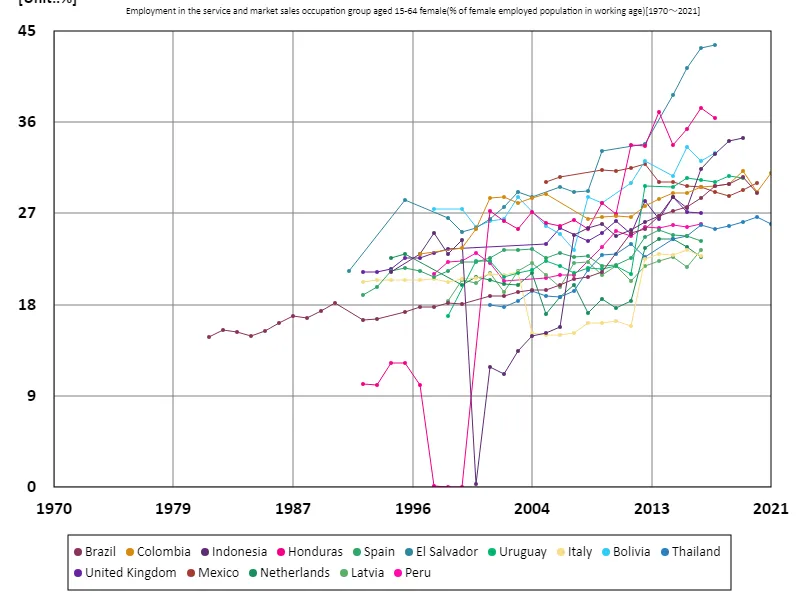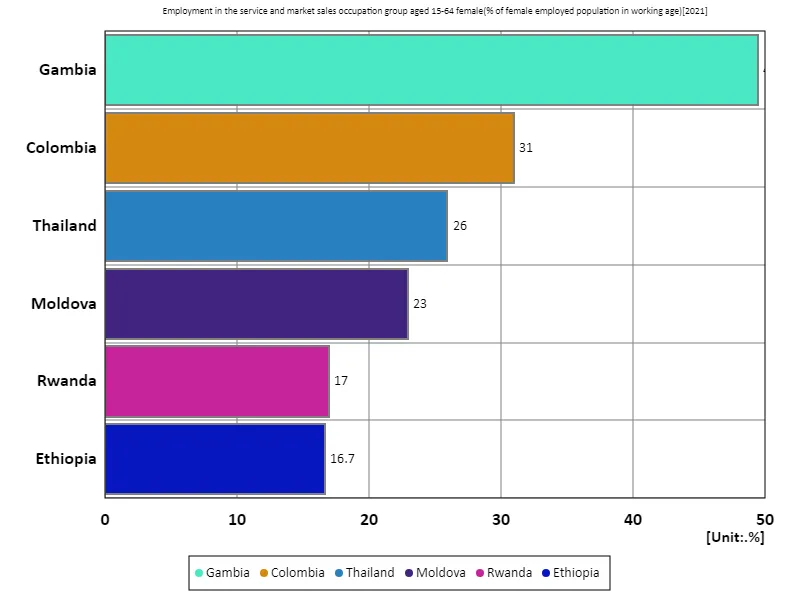- Abstract
- Employment rates for women aged 15-64 in the service and marketing sectors (as a percentage of the working-age female workforce)
- Employment rates for women aged 15-64 in the service and marketing sectors (percentage of working-age female employment in the labour force) (Worldwide)
- Employment rate for women aged 15-64 in the service and marketing sectors (as a percentage of the working-age female workforce) (Worldwide, latest year)
- Reference
Abstract
Historically, the global trend for women’s employment in the service and marketing sectors has seen steady growth, particularly in emerging economies. In countries like Colombia, where 31% of women aged 15-64 were employed in these sectors by 2021, a significant shift has occurred. Women’s increasing participation in these industries reflects broader societal changes, including improved access to education, shifts in labor demand, and evolving gender norms. Over time, service sectors have become a primary employment source for women due to the rise of retail, healthcare, and technology-driven markets.
Employment rates for women aged 15-64 in the service and marketing sectors (as a percentage of the working-age female workforce)
The employment rate of women aged 15-64 in the service and marketing sectors has shown significant growth over the past few decades, reflecting broader global shifts in labor markets. El Salvador, with the highest recorded rate of 43.6% in 2017, exemplifies this trend, achieving its peak employment level. As economies have become increasingly service-oriented, women have gained greater access to roles in retail, healthcare, and technology. This growth is linked to better education, evolving gender roles, and the demand for flexible, customer-facing jobs. Despite progress, gender disparities in sectoral employment persist globally.


The maximum is the latest one, 43.6% of El Salvador
Employment rates for women aged 15-64 in the service and marketing sectors (percentage of working-age female employment in the labour force) (Worldwide)
The employment rate of women aged 15-64 in the service and marketing sectors has steadily increased from 1981 to 2021, driven by the global shift toward service-based economies. El Salvador reached its peak of 43.6% in 2017 and has maintained this rate, reflecting strong participation of women in retail, healthcare, and other customer-driven industries. This growth is linked to better education and changing societal norms, promoting women’s access to employment. While El Salvador has reached its peak, many regions continue to see gradual progress, though gender disparities remain.


The maximum is the latest one, 43.6% of El Salvador
Employment rate for women aged 15-64 in the service and marketing sectors (as a percentage of the working-age female workforce) (Worldwide, latest year)
In 2021, Gambia recorded the highest female employment rate in the service and marketing sectors at 49.5%, significantly above the global average of 27.2%. This reflects the growing importance of service industries in many developing economies, where women increasingly engage in retail, hospitality, and healthcare. While Gambia leads, many regions have seen gradual growth in female participation, driven by improved education and changing gender norms. However, disparities remain, with some areas still facing challenges in achieving gender parity in the workforce, especially in leadership roles.


The maximum is 49.5% of Gambia, the average is 27.2%, and the total is 163%



Comments